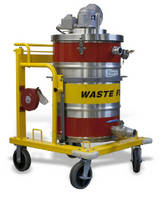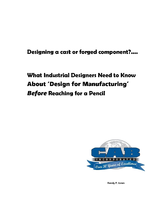Vacuum Cleaners suit fuel and solvent recovery.
Press Release Summary:

Specifically designed for hazardous locations, Fuel and Solvent Recovery Vacuum Cleaners are constructed of stainless steel SAE 304 and equipped with identifying red and yellow bands. Units are available in electrically or pneumatically operated versions and meet NFPA 30 Chapter 4 Flammable and Combustible Liquids code. To absorb emitted vapors, Granular Activated Carbon Adsorption System can be added at exhaust port. Liquid filter and de-fueling suction hose are included.
Original Press Release:
Fuel and Solvent Recovery Vacuum Cleaners with Activated Carbon Filters Specifically Designed to be Used in Hazardous Locations
Meets the NFPA 30 - Flammable and Combustible Liquids Code
At Tiger-Vac we feel that Safety Has No Compromise. With this being our ultimate goal we have designed a full line of vacuum cleaners dedicated for the recovery of Fuel and Solvents.
The Tiger-Vac Vacuum Cleaners for Fuel and Solvent Recovery are the most advanced in the industry for Aircraft Maintenance. These units are all constructed of stainless steel SAE 304 and equipped with identifying red and yellow bands - meets NFPA 30 Chapter 4 (Container and Portable Tank Storage). They are available in both electrically or pneumatically (air) operated versions. Turnkey System - a Liquid Filter, as well as a De-Fueling Suction Hose, are included with the unit. Other tools and accessories for recovering spills off of the floor are also available.
When Fuel or Solvents are recovered, the vapors that are emitted from the Exhaust Port (downstream) of the vacuum cleaner must be evacuated or neutralized. There are two options to be considered in order to avoid vapor emissions being spread into the atmosphere and creating an explosive environment.
o If Fuel or Solvents are recovered inside of a hangar, the vapor emissions created by the vacuum cleaner must be evacuated to the outside of the building. In order to do this the vacuum cleaner's external port must be equipped with a hose attachment for venting to the outside.
o The other option is a Granular Activated Carbon Adsorption System (also called Activated Charcoal). This is added at the exhaust port of the vacuum cleaner and will absorb any vapors that are emitted by the vacuum cleaner. This type of system is ideal for the removal of almost any organic compounds.
Tiger-Vac provides these two options when Fuels or Solvents need to be recovered, for example, in aircraft de-fueling and de-puddling requirements. It is absolutely essential that a Legally Certified Explosion Proof Vacuum Cleaner certified by a Nationally Recognized Testing Laboratory (NRTL) be used.
Please note the following: This line of vacuum cleaners complies with NFPA, NEC and OSHA standards set for flammable and combustible liquids - Class I, Division I locations. These vacuum cleaners also comply with 29 CFR 1910.307 and 29 CFR 1910.399. For more information please visit the OSHA website located at www.osha.gov.
Tiger-Vac sold its first vacuum cleaner in 1969. Having been in business for over 40 years, we have come to know our industry very well. Our customers demand a commitment to manufacturing and delivering quality vacuum cleaners that suit their various needs.
Being ISO 90001:2008 and CSA, ATEX, IECEx, NRTL (Nationally Recognized Testing Laboratory) worldwide certified, we have not only met these demands but exceeded them. We continuously strive to improve upon our existing products, as well as design new systems, to serve ever changing industries.
For more information please visit our website located at www.tiger-vac.com.
AT TIGER-VAC SAFETY HAS NO COMPROMISE




